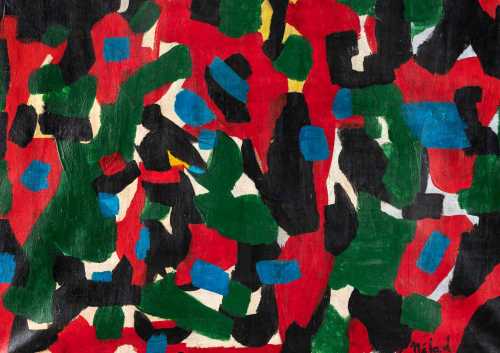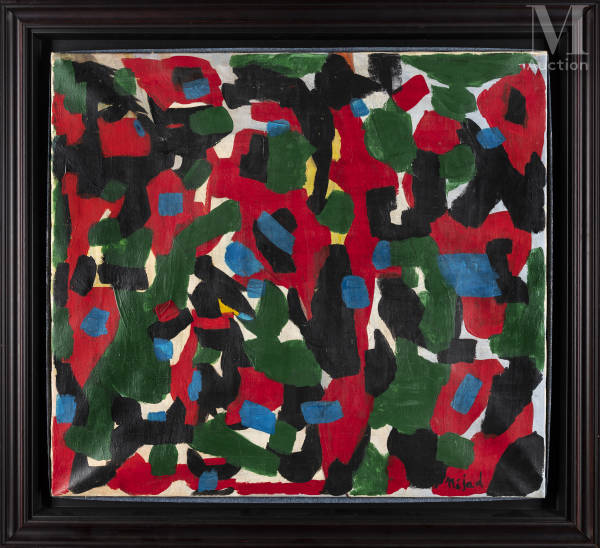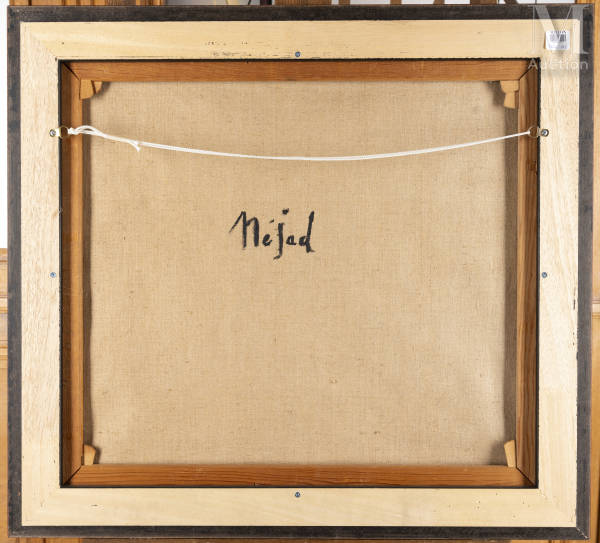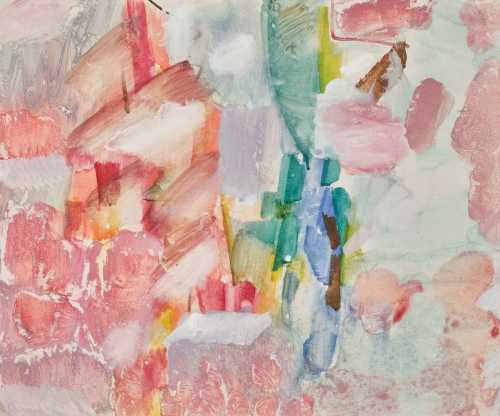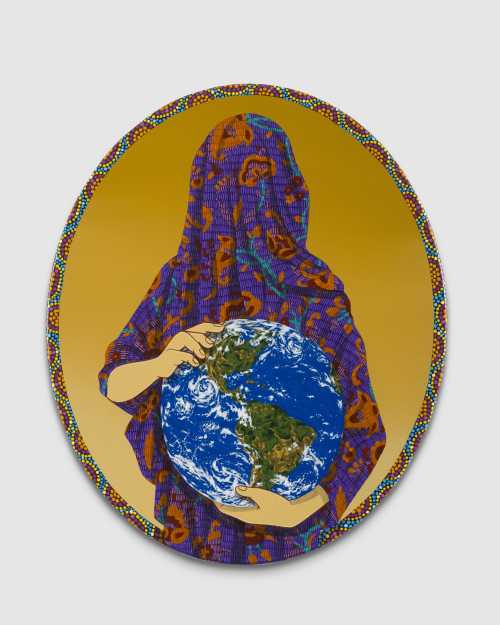- Composition
- Oil on canvas
- Painting
- 67 * 61 cm
- Signed lower right "Najad", and countersigned "Najad" on the reverse
5 July 2022
Estimation
€5,000
5,248 USD
-
€8,000
8,397 USD
Unsold
Artwork Description
Nejad Devrim is one of the most prominent Turkish artists who spent a significant period of his career in the libertarian atmosphere of Paris after the Second World War.
Devrim belonged to a generation gathering the first modernists of Turkey. His works were contemporary with modernist artists of his day while drawing inspiration from the European art scene. He abandons the figurative compositions he began in Istanbul and develops works that will later be identified as major pieces of Turkish abstract art. He positioned himself on the European artistic scene by integrating the multicolored compositions of Byzantine mosaics into his works. He is recognized as the most important representative of geometric and lyrical abstraction in the history of Turkish art. As a lyrical abstract artist, he believed that nature should not be imitated, but rather explored. He represented what he found in lyrically expressive paintings in which color is used as a powerful compositional element. He viewed his paintings as places in which chance and unknown encounters could be discovered.
Nejad Devrim (1923, Istanbul - 1995, Poland) was the son of artist Fahrelnissa Zeid and author İzzet Melih Devrim. As part of a family whose members were mostly artists, he traveled to Paris in 1946, completing his studies at the Faculty of Fine Arts in Istanbul in 1941. He quickly became one of the young artists invited to the “salons” organized by Gertrude Stein. He participated consecutively for many years in the exhibitions of the Salon de Mai and the Salon de Réalités Nouvelles. His first personal exhibition took place in 1950 at the Galerie Lydia Conti in Paris which also exhibited works by eminent artists such as Hartung, Soulages and de Staël. That same year, he was one of the painters of the School of Paris, whose works are selected by Leo Castelli to be exhibited in New York. Later, his paintings are exhibited annually at the Galerie Charpentier, as part of the exhibitions of the School of Paris.
In Paris where he lived until 1968, he exhibited with established artists of the time and figured among the Parisian intelligentsia alongside the biggest names in abstract art of the time. In 1968, he left Paris for Poland where he resided until his death in 1995. He was the subject of numerous personal exhibitions, at the Galerie Allard (Paris, 1947), the Galerie Ex Libris (Brussels, 1953) , Alexander Zodiac Iolas (New York, 1957), the K. Kunsthandel Gallery (Kopenhag, 1964), the Isabella Lemarie Dubreuil Gallery (Paris, 1975), Vakko Art Gallery (Ankara, 1982). His works are part of the collections of the Istanbul Museum of Painting and Sculpture; Modern Istanbul; National Museum of Modern Art, Paris; Nantes Museum of Fine Arts; National Museum in Warsaw; Royal Museum of Fine Arts,
Devrim belonged to a generation gathering the first modernists of Turkey. His works were contemporary with modernist artists of his day while drawing inspiration from the European art scene. He abandons the figurative compositions he began in Istanbul and develops works that will later be identified as major pieces of Turkish abstract art. He positioned himself on the European artistic scene by integrating the multicolored compositions of Byzantine mosaics into his works. He is recognized as the most important representative of geometric and lyrical abstraction in the history of Turkish art. As a lyrical abstract artist, he believed that nature should not be imitated, but rather explored. He represented what he found in lyrically expressive paintings in which color is used as a powerful compositional element. He viewed his paintings as places in which chance and unknown encounters could be discovered.
Nejad Devrim (1923, Istanbul - 1995, Poland) was the son of artist Fahrelnissa Zeid and author İzzet Melih Devrim. As part of a family whose members were mostly artists, he traveled to Paris in 1946, completing his studies at the Faculty of Fine Arts in Istanbul in 1941. He quickly became one of the young artists invited to the “salons” organized by Gertrude Stein. He participated consecutively for many years in the exhibitions of the Salon de Mai and the Salon de Réalités Nouvelles. His first personal exhibition took place in 1950 at the Galerie Lydia Conti in Paris which also exhibited works by eminent artists such as Hartung, Soulages and de Staël. That same year, he was one of the painters of the School of Paris, whose works are selected by Leo Castelli to be exhibited in New York. Later, his paintings are exhibited annually at the Galerie Charpentier, as part of the exhibitions of the School of Paris.
In Paris where he lived until 1968, he exhibited with established artists of the time and figured among the Parisian intelligentsia alongside the biggest names in abstract art of the time. In 1968, he left Paris for Poland where he resided until his death in 1995. He was the subject of numerous personal exhibitions, at the Galerie Allard (Paris, 1947), the Galerie Ex Libris (Brussels, 1953) , Alexander Zodiac Iolas (New York, 1957), the K. Kunsthandel Gallery (Kopenhag, 1964), the Isabella Lemarie Dubreuil Gallery (Paris, 1975), Vakko Art Gallery (Ankara, 1982). His works are part of the collections of the Istanbul Museum of Painting and Sculpture; Modern Istanbul; National Museum of Modern Art, Paris; Nantes Museum of Fine Arts; National Museum in Warsaw; Royal Museum of Fine Arts,
More lots by Nejad Melih Devrim
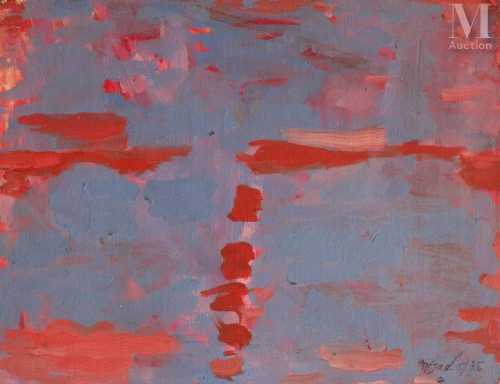
Reflet dans l'eau
Estimation
€2,500
2,607 USD
-
€3,500
3,650 USD
Realized Price
€7,500
7,821 USD
150%
Sell at
Sale Date
Millon & Associés
-
19 December 2024

Mon Ciel Anglais (My English Sky)
Realized Price
11,395 USD
Min Estimate
5,751 USD
Max Estimate
8,617 USD
Average Artwork Worth
+81.675%
Average Growth of Artwork Worth
Sales Performance Against Estimates
Average & Median Sold Lot Value
2021 - 2025
Performance vs. Estimate
2021 - 2025
Sell-through Rate
2021 - 2025
Similar Artworks
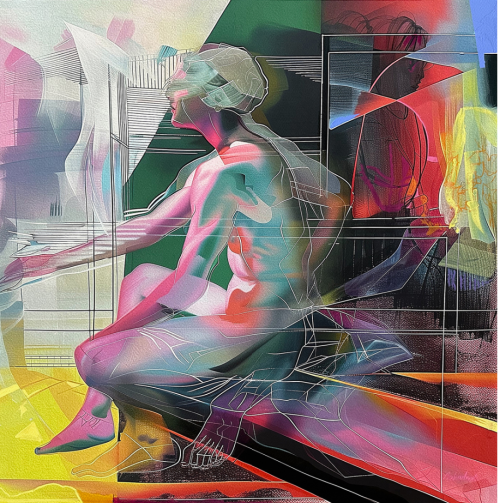
Tracked and Traced
Estimation
$1,800
-
$2,500
Sale Date
Artsy Auction
-
2 May 2025

Camera on the Table
Estimation
$2,800
-
$5,000
Sale Date
Veno Art
-
11 June 2023
